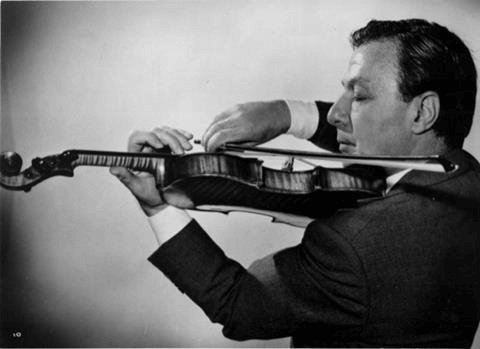In a world often captivated by cinematic celebrities and pop sensations, it’s rare for a classical musician to earn a place on the Hollywood Walk of Fame. Yet Nathan Milstein, one of the 20th century’s greatest violinists, did exactly that. With a career defined by masterful interpretations, refined artistry, and relentless dedication to his craft, Milstein’s influence went far beyond concert halls, earning him a star at 6379 Hollywood Boulevard, awarded on February 8, 1960, in the Recording category.
A Lifetime of Musical Brilliance
Born on January 13, 1904, in Odessa, Russia (modern-day Ukraine), Nathan Milstein began playing the violin at age 7. His extraordinary talent was recognized early, leading him to study with Leopold Auer, the famed Russian teacher responsible for guiding other virtuosos like Jascha Heifetz. Milstein quickly gained prominence, touring across the Soviet Union before eventually settling in the West. By the 1930s, Milstein was a celebrated international soloist, known for his impeccable technique and elegant style. He made his American debut in 1929 with the Philadelphia Orchestra, and over the decades became a fixture in the classical music world, performing into his 80s with astonishing precision and grace.
The Walk of Fame Recognition
Receiving a star on the Hollywood Walk of Fame is a rare honor for a classical musician. While actors, directors, and pop stars dominate the famous sidewalks, Milstein’s inclusion reflects the deep respect he earned from both the music industry and the broader public. His star, placed at 6379 Hollywood Boulevard, symbolizes his influence on recorded music, a legacy preserved through numerous albums and performances that continue to inspire musicians and listeners worldwide.
Milstein’s recordings, particularly of Bach’s Sonatas and Partitas, are considered definitive even decades later. His 1975 Grammy-winning album of solo Bach works is frequently cited as one of the finest classical violin recordings ever made. His approach to playing was marked by purity, intelligence, and restraint, setting a standard that aspiring violinists still strive to emulate.
Bridging Art and Culture
Milstein’s Walk of Fame star is more than a personal accolade. It represents a bridge between classical music and popular culture. Hollywood’s sidewalks are often seen as monuments to mass entertainment, yet Milstein’s presence there reminds us that true artistry transcends genre.
Unlike many stars awarded for short-term fame, Milstein earned his place through decades of consistent excellence. He was never a flashy performer. Instead, he was deeply philosophical about music, famously stating, “To practice, you must invent.” His artistry was built on thoughtful interpretation and an intimate understanding of each composer’s voice.
A Timeless Legacy
Nathan Milstein passed away in 1992, but his music continues to resonate. From the world’s greatest concert halls to the immortal sidewalks of Hollywood, his contributions to the art of violin playing are lasting and profound. His Walk of Fame star is not just a token of fame, it’s a tribute to musical integrity, lifelong dedication, and a career that changed how we hear the violin. So next time you’re in Los Angeles, stop at 6379 Hollywood Blvd and remember the man whose quiet elegance on the violin earned him a place among the stars.
Conclusion
Nathan Milstein’s presence on the Hollywood Walk of Fame is a powerful testament to the lasting impact of true artistry. In a space typically dominated by celebrities from film and pop music, his star serves as a rare and meaningful tribute to the world of classical music. Milstein wasn’t just a violinist; he was a visionary who elevated every piece he performed with thoughtfulness, precision, and elegance. His legacy, both on stage and in recordings, continues to influence generations of musicians. As you stroll down Hollywood Boulevard, let his star at 6379 Hollywood Blvd remind you that real greatness is timeless and often, quietly brilliant.



















